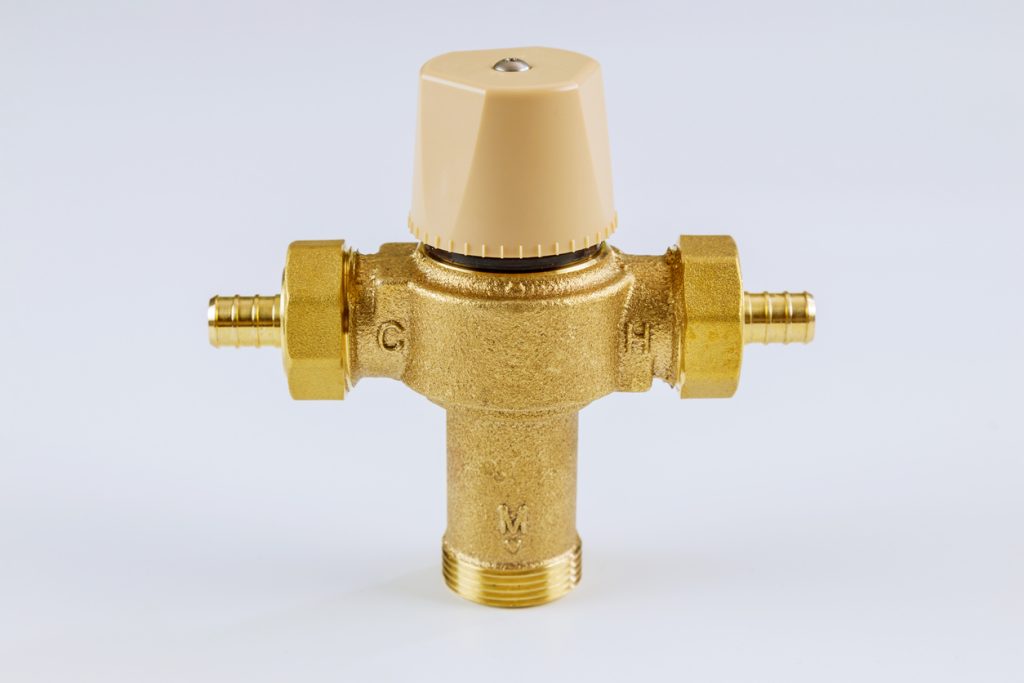Preventing Scalding Risks with Thermostatic Mixing Valves
Scalding from excessively hot water is a severe public health hazard, especially for vulnerable populations like children, seniors, and people with disabilities. Facilities such as care homes, hospitals, schools, and public buildings have a legal and ethical duty of care to control hot water temperatures to prevent accidental scalding injuries.
At Pipe Testing Services, we know that installing thermostatic mixing valves (TMVs) on hot water outlets is a reliable method to blend hot and cold water to a safer pre-set temperature.
With that said, whatever the facility or industry, we can help with preventing scaling risks.
Scalding from hot water represents a large portion of burn injuries annually. According to a report by the British Burns Association, around 250,000 people in the UK sustain some type of burn injury each year. The majority of these burns are scalds, also referred to as thermal injuries. This indicates that accidental scalding, primarily from hot water sources, affects a huge number of British citizens every year.
What are TMVs and How Do They Work?
A thermostatic mixing valve is a specialised mechanical valve that blends hot water from a heating system with colder water to deliver water at a stable, temperate temperature. The TMV contains a thermostat that senses the mixed water temperature and automatically adjusts the hot/cold water flow ratio to maintain the set outlet temperature.
TMVs are commonly set between 38-46°C to balance scalding risks against the need for sufficiently hot water to control Legionella bacteria growth. By installing TMVs, facilities can provide appropriate hot water for uses like washing hands or dishes, while eliminating the chance of scalding at fixtures used for bathing or personal hygiene.
Where are TMVs Crucial to Install?
Thermostatic mixing valves should be installed at any water outlet where there is a danger of accidental scalding. Key locations include:
- Showers and baths - Set TMVs to 41°C or less to prevent serious burns.
- Hand wash sinks - TMVs should be set to 41°C maximum for hand washing.
- Janitor sinks and utility sinks - Fit TMVs set to 46°C to allow higher temperatures for cleaning.
- Sinks used by children or seniors - Install TMVs set to 38°C.
- Kitchen sinks - TMVs help provide a safer hot water supply for washing dishes.
Different TMV Models
Various TMV models suit different applications, from point-of-use valves fitted directly on sinks, to larger central supply valves that blend water for whole floors or buildings. Specialist models are also available for healthcare settings or systems with fluctuations in water pressure. Our experts can recommend the right TMV solution for your facility’s needs.

Complying with Scalding Prevention Regulations
Facilities in the UK have clear legal duties around scalding risks under legislation like the Health and Safety at Work Act and the Management of Health and Safety at Work Regulations. The HSE provides specific guidance on controlling hot water temperatures in care settings, schools, and public buildings to prevent accidental scald injuries. Installing TMVs is a key part of complying with regulations and codes of practice.
Regular TMV Maintenance is Essential
To ensure TMVs provide effective scalding prevention over time, proper maintenance is essential:
- Strainers should be inspected and cleaned every 3-6 months to remove debris and scale build-up.
- Annual fail-safe testing checks the TMV will shut off hot water if the cold supply fails.
- TMVs may need recalibrating if the set temperature has drifted from the target.
- Internal components like seals, springs, and O-rings wear and require replacement.
Potential Cost Savings
As well as improving safety, installing TMVs can create cost savings for facilities. Blending water to optimum temperatures reduces energy bills from heating excess hot water. And importantly, preventing just one severe scald incident can avoid substantial costs in medical claims and legal fees.
Your Specialist TMV Contractor
With regular use, TMVs are subject to wear and tear. Facilities should utilise a specialist contractor for supply, installation, commissioning, testing, and maintenance of TMVs.
At Pipe Testing Solutions, we are experts in thermostatic mixing valves and scalding prevention. Our experienced team can handle:
- TMV risk assessments to identify needs.
- Supply and fitting of TMV models for your specific application.
- Commissioning and outlet temperature testing.
- Ongoing maintenance contracts and safety checks.
Prevent Scalding and Ensure Compliance with PTS
Don’t wait for a scalding incident or safety audit failure – safeguard your hot water systems now. Installing thermostatic mixing valves is a straightforward way to start controlling scald risks from hot water outlets. As specialists in TMVs, we know the regulations and are experts in preventative measures for healthcare facilities, care homes, schools, public buildings and more across the UK.
Contact Pipe Testing Solutions today to get expert recommendations on TMVs. We can also provide assistance with full scalding risk assessments surveying all your hot water outlets. Ultimately, safe hot water means protecting your occupants and meeting your duty of care – so trust us to handle scalding prevention and ensure TMV compliance on your behalf.
Phone: 01922 451646
Email: enquiries@pipetestingservices.co.uk
Address: Unit 27 Birchbrook Industrial Estate, Shenstone, Lichfield, Staffs, WS14 0DJ
Our mission is to deliver reputable scalding prevention services that ensure the safety of your hot water systems. Contact us today to discuss your TMV needs or schedule a consultation. Our knowledgeable team stands ready to assist.
FAQs
TMVs should be tested at least annually, with more frequent checks every 3-6 months recommended for high-risk settings.
Yes, TMVs can usually be installed on existing hot water outlets, provided the pipes are the correct diameter.
TMVs should be inspected and tested at least annually to ensure they are operating within the correct temperature range.
For baths and showers, 41°C or less is recommended. Hand wash sinks should be 38-41°C.
TMVs reduce energy loss from very hot water flowing through pipes and fixtures.
TMVs alone don’t control Legionella. Maintaining hot water at 60°C and cold below 20°C is also vital.
